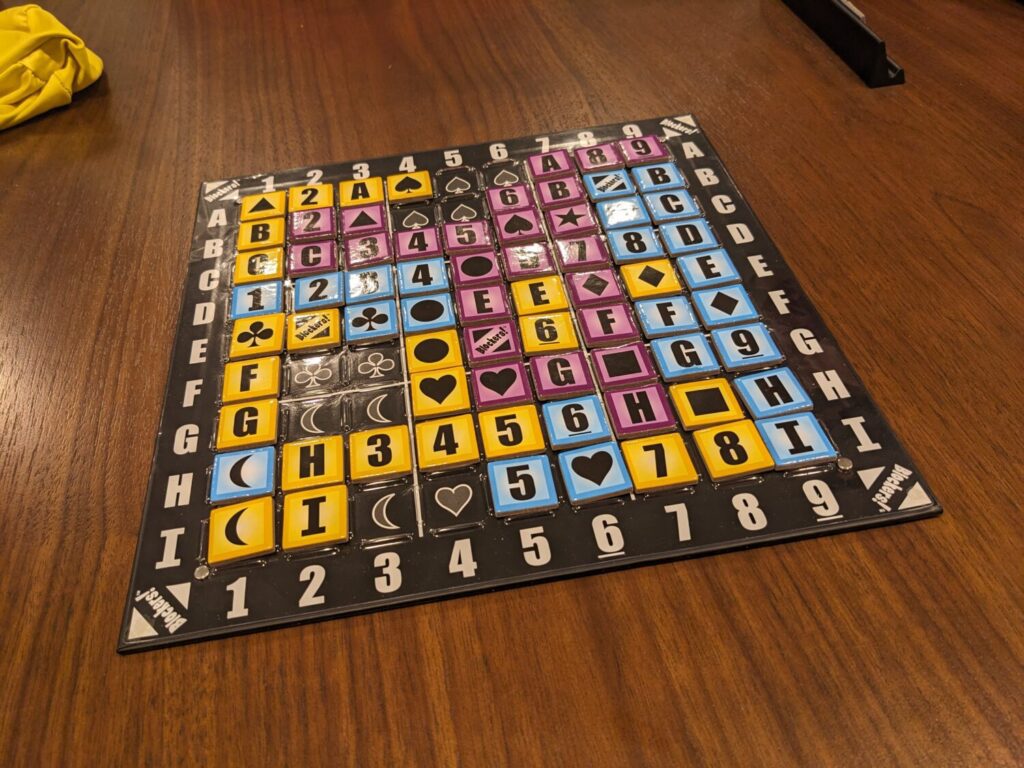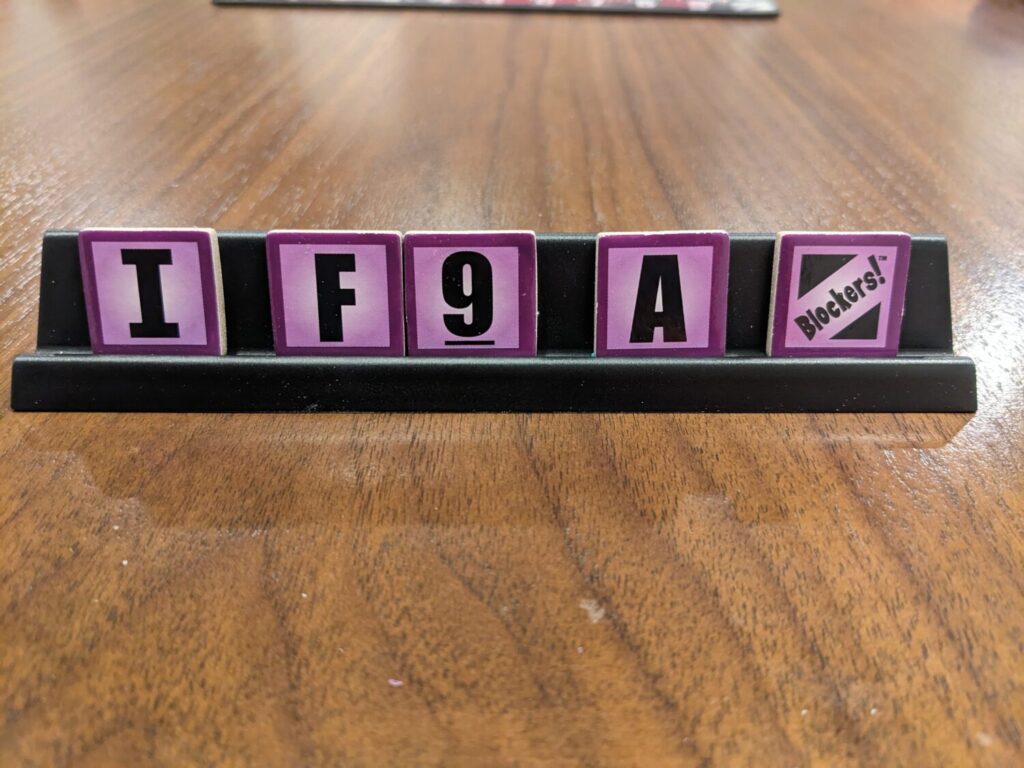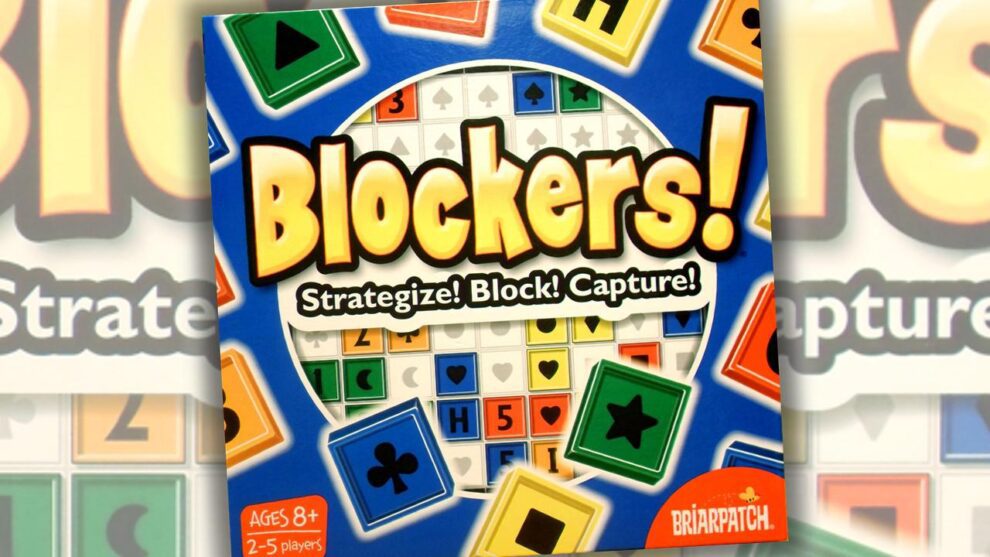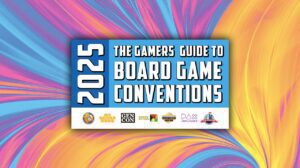Disclosure: Meeple Mountain received a free copy of this product in exchange for an honest, unbiased review. This review is not intended to be an endorsement.
From time to time, I reach out to partners to see if there are older games from their collections that are available for review. Over the last two years, I have worked with the team at Eagle-Gryphon to profile a wide swath of games in their legacy catalog—sure, there are some Lacerda titles in there, but we have gone far and wide with reviews of games like Xenon Profiteer, Baseball Highlights: 2045, Sleuth, and Railways of the World.
From a batch of review copies that recently arrived, I was excited to break out Blockers!. In part, that’s because anything I can use as a pre- or post-dinner activity with my two kids (ages 8 and 11) is a potential winner. But there was another reason that surfaced after I realized who designed the game: Kory Heath is the designer of Blockers!. Heath, who passed away last year, is the co-designer of The Gang, the cooperative poker game that landed on the list of my top ten titles of 2024.
Shades of what made The Gang work so well are on display with Blockers!. That’s especially true at higher player counts.

“Don’t You Dare Block Me!”
Blockers! is a 2-5 player abstract strategy game. To win, players must try to score the least amount of points. Over a series of turns, each player will place one of the five tiles in their hand onto the board. (Each player has a Scrabble-style tile holder for convenience, but we found that some players preferred to keep their tiles in their hands.) The main board is a 9×9 grid with nine rows lettered A-I, nine columns numbered 1-9, and nine blocks of areas demarcated by various symbols (hearts, spades, etc.). These areas often cross over, providing flexibility in tile placement.
That also means each tile has nine different spots where it can be placed. Players can choose any of their five tiles on any empty space, and must place a tile on an empty space if they have the choice to do so.
Players will be scored based on the number of different groups with their color tiles on the board…and the best score is a single point, meaning a single contiguous group of their color connected on the main board. That’s hard to do—in my three plays, the lowest score was a two—but it’s a fun objective that makes it easy for players to stay on task.
Eventually, spaces get tight. If a player has to place a tile but there are no empty spaces, they have to capture another color’s tile, and they can’t capture a tile that would break a group into multiple groups. At the end of the game, a player will score points for the largest number of captured tiles of a single color, in addition to the number of groups they created during the game. Scores usually range in the low single digits, keeping games very close.
Blockers! does, as one might expect, feature a lot of blocking, so it was fun to see the random order of tiles coming out in ways that had everyone getting into everyone else’s way. Also, the game’s rule that a capture cannot break up an existing group left players trying to capture edges of other blocks, while still being placed in a way that might give that player a chance to connect to all of their stray pieces later in the game.

There’s Something Here
Blockers! was a very pleasant surprise. You can teach the game to almost anyone in about a minute, and turns are very fast thanks to the limited choices available on each turn. My 11-year-old is often the pickiest of gamers now that they have been spoiled by getting so many great games here at the house, and after our first three-player game of Blockers!, they asked to re-rack it immediately. (That almost never happens.)
So, Blockers! is a solid yes. A couple issues showed up by our third play—the big one being that Blockers! at three players is good, but Blockers! with four or more players feels like the way to go. (The game accommodates up to five players, to maximize the blocking.) A bit like my main issue with The Gang, you want maximum players to increase the tension in Blockers!, in part because the same board is used for all player counts.
The other issue is more of a production complaint: the tiles don’t sit comfortably on the board’s spaces, despite a plastic overlay that should seat each tile just so. That means that tiles will occasionally be a mess on your board. One might also have an issue figuring out which symbols can be placed in which spaces as the tiles begin to cover up complete sections of the map.
However, those issues were minor. Blockers! is worth a look, particularly for families looking for interesting strategy games that can be played with kids of most ages in about 20 minutes. Blockers! is another example of an interesting design by a person the industry lost too soon, so I’m glad I had the chance to make the game’s acquaintance.










